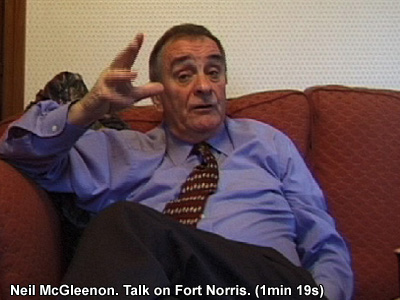
The Tudor policy of 'surrender and regrant' had brought a number of Gaelic lords nominally under the jurisdiction of the English Crown. When Elizabeth I came to the throne the most troublesome Gaelic lord in Ireland was 'The O'Neill', a powerful Ulster Chieftain who frequently raided 'The Pale'. His base was in Tyrone from where he used his power to establish a stronghold in Ulster. The septs of County Armagh such as the O'Hanlon's gave their allegiance to O'Neill when it would advance their own interests.
Under the terms of the 'surrender and regrant' policy Conn O'Neill travelled to the English Court and surrendered his land to the Crown. He received the land back with the title Earl of Tyrone on the basis that he would maintain a truce. O'Neill never seriously upheld the truce and used his castle at Dungannon to launch raids against the English forces in Ireland. Upon his death in 1559 he was succeeded by Hugh O'Neill who became the second Earl of Tyrone. He was the last to be inaugurated as 'The O'Neill' and proved as troublesome to the English as his predecessor had been.
In the 1590's the area around the hilltop settlement of Mullabrack attained a certain strategic prominence. Situated near the Gap of the North this area marked the entrance into Gaelic Ulster from the English controlled area of North Leinster. Into this area the English advanced with the aim of establishing fortifications along the boundary of Hugh O'Neill's stronghold. This defensive wall was known as Dane's Cast and proceeded from Scarva through South Armagh and into Monaghan where it was known as the Black Pig's Dyke. From these permanent settlements they sought to launch waves of attack upon O'Neill and his forces. In a change of strategy O'Neill abandoned his castle at Dungannon and establishing a guerrilla force, used the crannogs of Marlacoo Lake and Loch Rorc‡in as field bases.
In September 1595 the English Army under the command of Sir John Norris were attempting to supply the garrison at Armagh. A scouting party of O'Neill forces shadowed the English as a skirmish party took up position at a ford of the River Cusher. To cross the river the English forces were forced to slow and alter formation rendering them susceptible to attack. Contemporary Gaelic sources indicate the location of the battle was near to the settlement of Mullabrack.
The two forces battled for several hours with both sides sustaining many casualties. Among those wounded were Sir John Norris and a number of his officers. Though the English rallied several times they were eventually forced to retreat to Newry. The battle received scant comment in the annals of the day but it was considered by many to be a major engagement of the Nine Year's War and featured in the correspondence of Dublin's Lord Deputy Russell and Lord Burghley, Queen Elizabeth's chief advisor at the English Court. The English received another defeat at the Battle of Yellow Ford in 1598 but this served to strengthen their resolve to crush O'Neill.
Lord Mountjoy was sent to Ulster charged with the task of erecting a line of fortifications along the River Blackwater providing a permanent and penetrating line of military strongholds. One such fort was established in the vicinity of the modern settlement of Mountnorris. Established in 1600 it was named after Sir John Norris who had been wounded at the Battle of Mullabrack. Around this fort there became established a small community, still flourishing and at that time imbued with much prestige.
James I sustained the English advance in Ireland and, forced to lead a nomadic lifestyle, O'Neill's campaign began to disintegrate. Sure of success James I sent Sir Arthur Chichester to Ireland to draw up plans for widespread plantation in Ireland. At the Battle of Kinsale in 1601 the English finally defeated the Gaelic forces. In 1607 O'Neill was summoned to the Royal court on the pretext of settling an argument he was embroiled in with his neighbour. Fearing he would be executed O'Neill fled Ireland along with the Earl of Tryconnell. With O'Neill gone there was no one with enough charisma to rally the Gaelic people and so the way was cleared for English jurisdiction to extend into Ulster and establish settlements.
In the accompanying audio recording, Dr. Neil McGleenon, retired headmaster and local historian, talks about the establishment by Mountjoy of a fort near present-day Mountnorris, as part of his strategy to defeat O'Neill in the Nine Years War.

Use the audio controller to listen to this talk, given in 2003.






